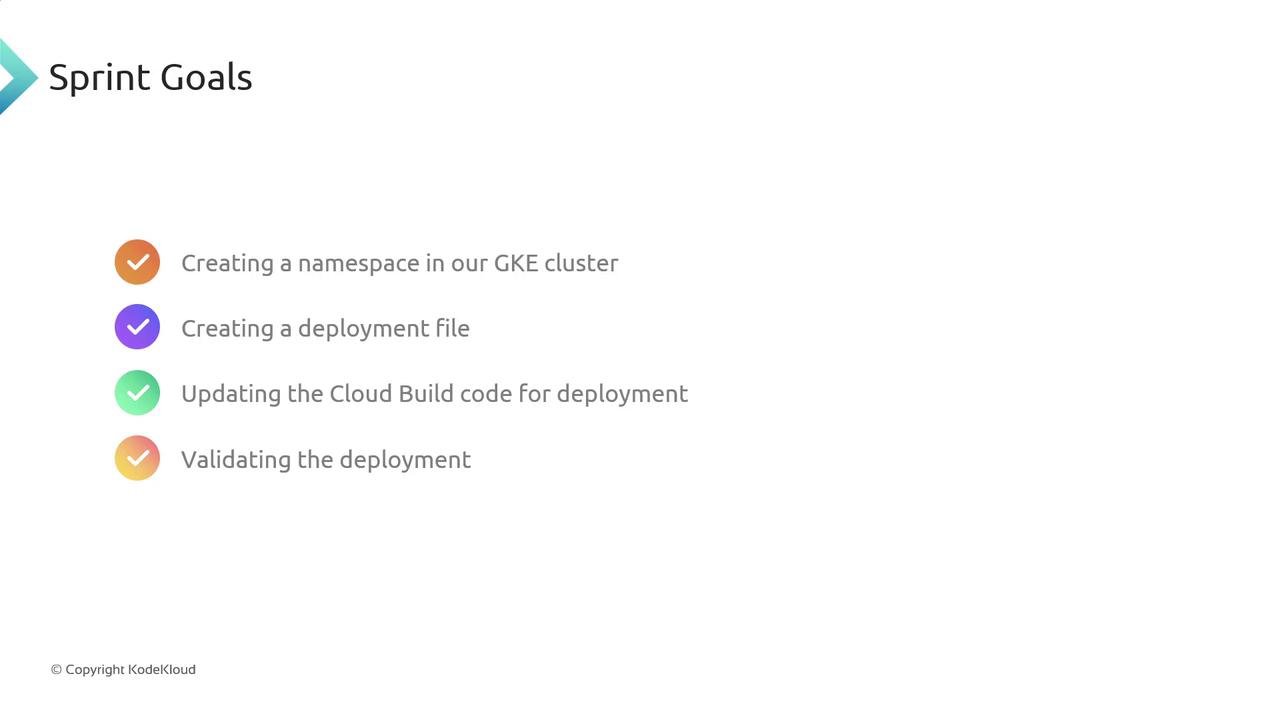GCP DevOps Project
Sprint 05
Sprint 05 review
Overview
In Sprint 05, our team focused on extending our Google Kubernetes Engine (GKE) continuous delivery workflow. The primary objectives were to:
- Isolate resources by creating a dedicated Kubernetes namespace
- Deploy our container image using a Kubernetes Deployment manifest
- Automate build and deploy steps via Cloud Build
- Verify that pods and services are running as expected
Sprint Goals
| Objective | Description |
|---|---|
| Namespace Creation | Provision a new namespace in GKE for application isolation |
| Deployment Manifest | Define a Deployment YAML to run our container image at scale |
| CI/CD Pipeline Update | Upgrade the Cloud Build configuration to build & deploy automatically |
| Deployment Validation | Confirm pods are ready and services are reachable |

Achievements
- Namespace Provisioned
Successfully createdmy-app-namespacein our GKE cluster. - Deployment Manifest Applied
Deployedapp-deployment.yamlwith replica scaling and liveness probes. - Cloud Build Pipeline Modified
Added build triggers and deployment steps tocloudbuild.yaml. - End-to-End Validation
Verified pod readiness withkubectl get podsand service endpoints viakubectl port-forward.
Warning
A Cloud Build step failed due to an outdated builder image. Always inspect build logs with:
gcloud builds log BUILD_ID
Then update the cloudbuild.yaml to reference the latest builder tags.
Key Takeaways
- Automating deployments with Cloud Build reduces manual errors.
- Namespaces provide effective isolation for development and production workloads.
- Regularly update pipeline images and inspect CI logs for faster troubleshooting.
References
Watch Video
Watch video content